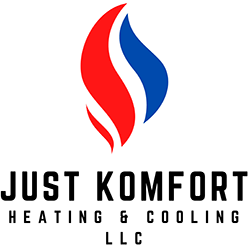
A furnace is almost always a background player at home, keeping you warm in the cold winter months. It frequently doesn’t get noticed until something goes wrong.
One root cause may be that your furnace has a cracked heat exchanger. It can potentially be hazardous, so it’s critical to learn the signs of a cracked heat exchanger and what you should do if you believe that may be the problem.
What Is a Heat Exchanger in a Furnace?
A heat exchanger transfers heat from the combustion chamber in your furnace to the air that circulates inside the air ducts. It usually accomplishes this via coils or tubes that heat up the air while functioning as a barrier to keep byproducts formed in the combustion chamber, called flue gasses, from getting out into your home.
Is a Cracked Heat Exchanger Dangerous?
Thanks to its central role, it shouldn't come as a surprise that a cracked heat exchanger can be very dangerous. A crack in the heat exchanger can allow dangerous gasses – like carbon monoxide, which can be lethal – to flow across your home.
For that reason, never use your furnace if you suspect it has a cracked heat exchanger, as letting it run could make the entire family sick. Call an HVAC professional right away if you think your heater has a cracked heat exchanger that needs repair.
Four Symptoms of a Cracked Heat Exchanger:
- Furnace shuts off: A crack in your heat exchanger could cause your furnace to shut off.
- Unusual Smells: If the air leaving your furnace has a strong chemical smell, it may be a sign gasses are leaking through cracks in your heat exchanger. These byproducts, which can smell like formaldehyde, are a common warning sign.
- Carbon monoxide alarm initiates or you recognize health problems: If a cracked heat exchanger is releasing carbon monoxide in your home, your carbon monoxide alarm could go off or family members could struggle with signs of carbon monoxide poisoning. Complications include headaches, dizziness, weakness, nausea, vomiting or feeling tired. If an alarm goes off or you feel sick, get out of the home right away and then call for help.
- Soot: If you find black sooty collecting around the exterior of your furnace, it’s another sign something might be seriously wrong.
What You Can Do if a Furnace Heat Exchanger is Cracked
If you suspect your furnace has a cracked heat exchanger, call a pro well versed in furnace installation Redmond as soon as possible so they can inspect your system and, if required, handle a furnace heat exchanger replacement. Costs often fluctuate depending on the situation, but estimates run in the neighborhood of $1,000 to $3,000.
Fortunately, the good news is that heat exchangers are regularly protected by the warranty. You’ll want to check the warranty paperwork on your furnace, since while the warranty may not cover the entire cost of repairs, it could significantly reduce your bill.
How to Prevent a Cracked Heat Exchanger in Your Home
One of the easiest ways to prevent a problem in your furnace overall is through routine furnace maintenance. Furnaces offer the most benefits when they run efficiently. Calling a skilled professional to check your furnace for old parts, dirty filters and other common problems can help you avoid getting a big bill later on.
It’s also helpful to take a look at your furnace filters every few months – it’s ideal some filters be replaced every 90 days or sooner if they are dirty or grimy. While the filters are not part of the heat exchanger itself, the strain of dragging air through a clogged filter makes the entire furnace work longer to complete its job. And the harder your furnace works, the more strain parts like the heat exchanger will sustain.
